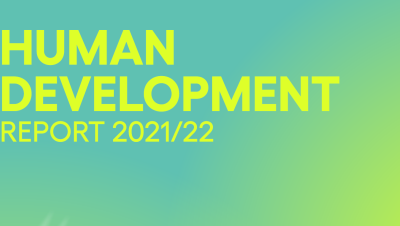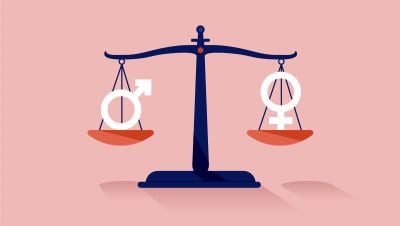There is a charming anecdote about the German mathematician Carl Friedrich Gauss. According to the version our mathematics teacher in Istanbul told us, a class of high school students in Germany was misbehaving (much like we were), and to punish them, their teacher told them to add up all of the numbers from one to one hundred. One of the students— Gauss himself— suddenly realized that the sum of the first and last number, the second and second-to-last, and so on, was always 101. Noting, too, that there were 50 such pairs within the first hundred numbers, it took him two minutes to work out the total (5,050) and come up with his famous formula to find it— saving him hours, possibly even days of calculations.
To me, this story is not just about mathematics, but about creativity and “creative labour” of all kinds— artistic and literary, too. Examining this anecdote can help us to better conceptualize the notion of “creative work” and to uncover and discuss its links to human development.
To most of us, the connection between creativity and human history is so clear that it is not even up for debate. Already in the 1960s, history textbooks in Turkey were teaching us that even though political and military triumphs are the most important measures of a civilization’s worth, we should also consider its artistic, literary and creative achievements.
Though in 1960s Turkey, not all teachers would have appreciated Gauss’s classroom creativity, for the point of the task assigned to his class was not to encourage them to be creative or to play around with numbers, but to punish them by forcing them to spend a given length of time on grinding out the solution. Perhaps this is the very definition of creativity, and its fundamental complication: that it is always unexpected and surprising.
To get to the heart of the matter, we might take a bold step and define creativity as a force that reduces the amount of effort required to achieve something, transforming those rules and traditions that would otherwise make the process more laborious. Our common sense tells us that creativity works against rules and regulations, traditions, bureaucracies and habits. Creative individuals may be involved in literary or artistic pursuits; they may be working in an advertising agency or on a factory assembly line; but none of this will change the most obvious feature of the nature of creativity. In this context, “creative labour” becomes an inherently oxymoronic concept.
At the same time there is more to creativity than just something that reduces the expenditure of time and effort; it also changes the intent behind that effort. We know, for instance, that the art of photography grew and spread in tandem with the rise of impressionist painting. This is because the spread of photography rendered obsolete any form of art whose purpose was still to mimic nature. Despite resistance from state-sponsored salons and galleries, bureaucrats, traditionalists and classicists, the impressionists’ creativity rapidly transformed the very purpose of art. Artists stopped painting the world as it was and started looking for ways to present it as it appeared to the artists’—to the human—eye.
Another complication is that any line we might try to draw between creative work and uncreative, ordinary work soon begins to look arbitrary and unfair. There are many who would argue that the work done at an advertising firm is less creative than the work of a poet, but is this correct? Is it fair to say that an artist is more creative than a car designer or a teacher? The translator of a book is as creative as its author; translators too have the right to exercise creativity in their work and to be accepted for this aspect of their humanity. Creative labour allows us to express our individuality and singularity, and the right to follow this very human urge is as fundamental as the right to freedom of expression and the acceptance of our differences. My moral perspective tells me that all kinds of labour, all types of work, should be creative, or should be intended as such.
The notion of creative work may be problematic and difficult to conceptualize, but this should not deter us from treating creativity as a key measure of human development and labour. Gauss’s teacher praised him for discovering a formula for the total of all the numbers from 1 to 100 rather than dutifully adding them up one by one; that is the kind of teacher we would all want, for we all wish our jobs would let us be as creative as an artist or a mathematician. Our respect and admiration for highly creative individuals hints at our desire to release our inner creativity and be innovative in our work, no matter what that work may be.
The enduring appeal of the story of Gauss’s mathematical creativity does not simply lie in the usefulness of the formula he discovered. We value Gauss’s creativity for its own sake. More than just the benefits of human creativity, ours is a reverence towards humanity itself, its ingenuity and its powers of imagination, capabilities and potential. On an intellectual if not a legal level, this understanding of creativity brings to mind the concepts of freedom of thought and freedom of expression. So when Gauss’s teacher greets his student’s discovery with enthusiastic approval and— instead of punishing him for disrupting the class— relays the story to others until it becomes the stuff of legend, we are delighted. It is a joy similar to what we feel when we know that our identity, our traditions, our personal stories and our choices are being treated with respect.
When we assess working conditions and environments, we need to measure and explore the extent to which there are mechanisms in place for human creativity to be taken into consideration, appreciated and harnessed. Where we work, are our discoveries and our new ideas respected and applied? Or do we simply replicate existing models and patterns that have been successfully implemented elsewhere? When we come up with an original solution at work, is it accepted, and are there mechanisms allowing us to voice it? Or are we expected to stick to pre-established norms and methods? If we work in a place where we are routinely expected to be creative, is it actual creativity that we are being asked for, or simply to produce hurried imitations of old blueprints? Does our work encourage us to be unique and original, or is there an understanding that we will be more successful if we mimic and replicate previously successful models? Does our workplace view creative individuals as troublemakers, or are they respected as Gauss was? I think the answers to these questions can be quantified and measured.
Half a century ago, colonial and post-colonial societies dramatically worried about imitation, authenticity and originality. Today, we value our creativity as an essential component of human development and wonder how we might begin to measure creative labour.
Translation by Ekin Oklap
This blog entry is a special contribution made to the 2015 Human Development Report “Work for Human Development” Please see page 96 for original format.
Photo credit: Backdrift/ Creative Commons license
The HDialogue blog is a platform for debate and discussion. Posts reflect the views of respective authors in their individual capacities and not the views of UNDP/HDRO.
HDRO encourages reflections on the HDIalogue contributions. The office posts comments that supports a constructive dialogue on policy options for advancing human development and are formulated respectful of other, potentially differing views. The office reserves the right to contain contributions that appear divisive.


